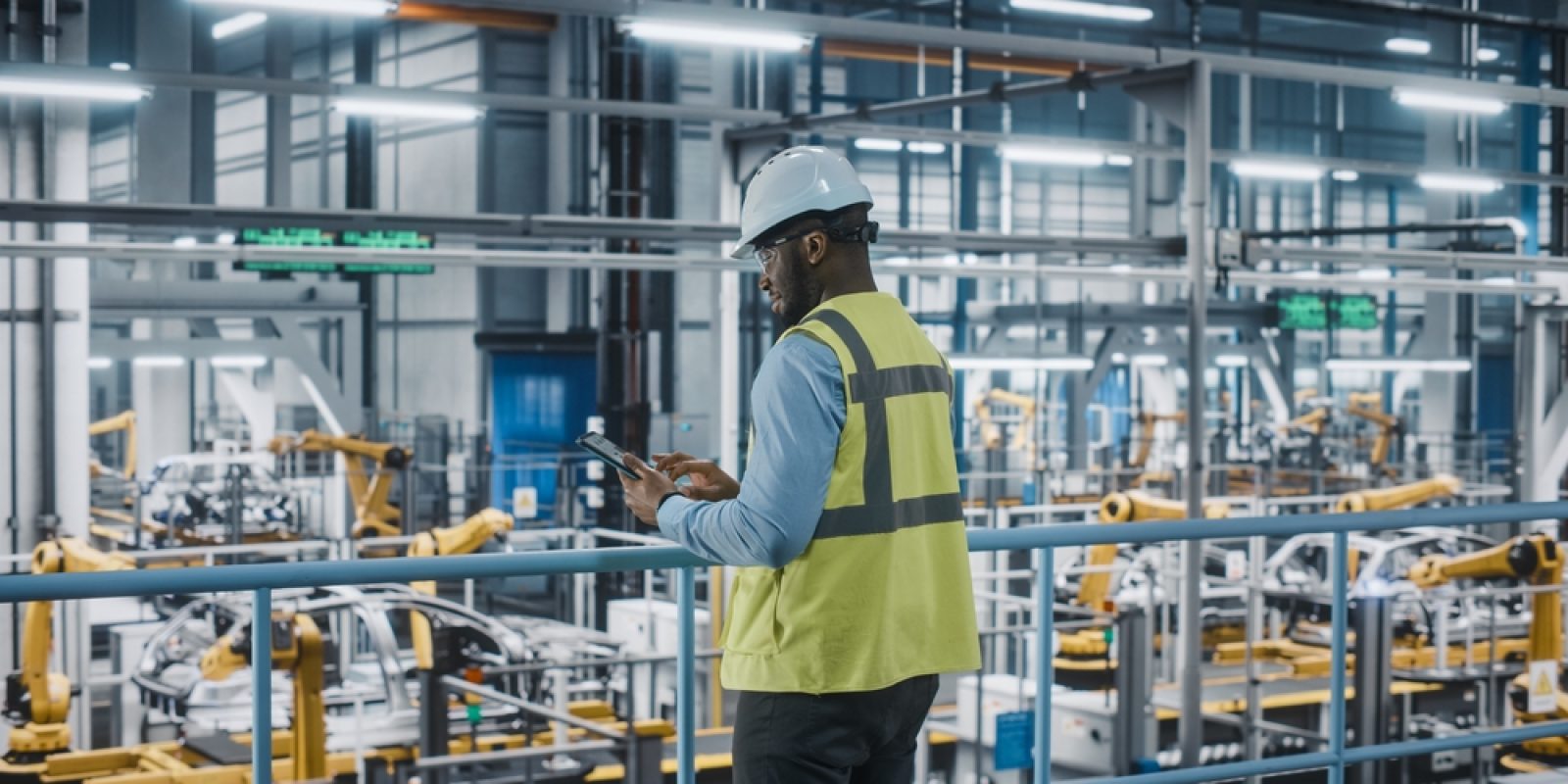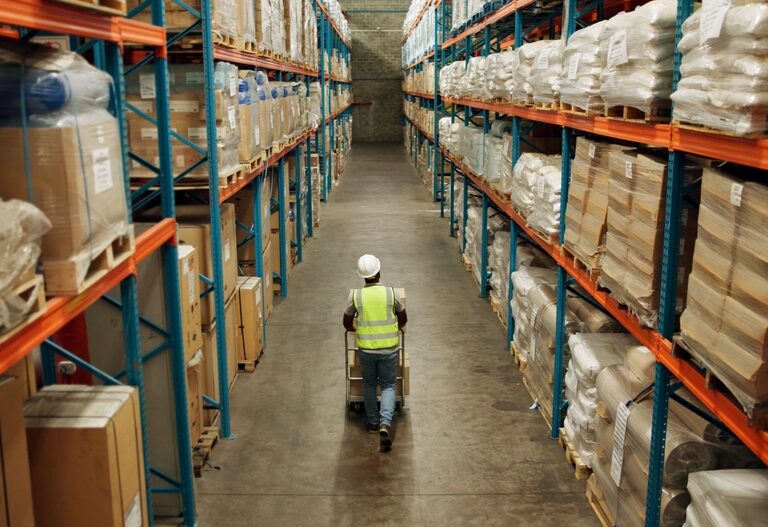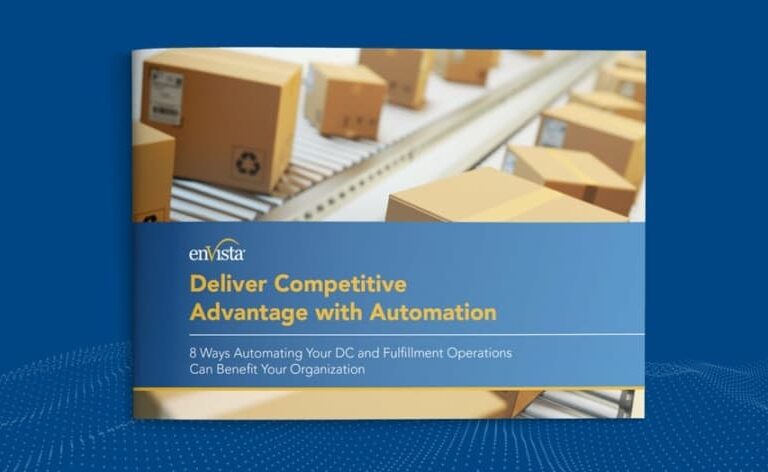Collaborative robots and industrial robots have revolutionised manufacturing and industrial processes, offering unparalleled efficiency and precision. These robots serve different purposes, and both play a role in optimising the manufacturing and supply chain sectors. Understanding the differences between them is crucial for businesses seeking to implement automation solutions tailored to their specific requirements.
Understanding the Basics of Robotics in Warehousing
Warehouse robots come in many forms and can fulfil a variety of roles. They excel at lifting heavy objects and performing repetitive tasks that require speed, reach or accuracy. Collaborative robots and industrial robots specialise in different areas of automation, and an efficient warehouse will typically utilise both, depending on the task at hand.
What are Collaborative Robotics (Cobots)?
Collaborative robots (cobots) are small, lightweight robots designed to work near or alongside humans. They are easy to set up and can typically be reconfigured to perform a variety of tasks depending on what is required at any given time. Most cobots possess force control and/or optical sensors to reduce the risk of colliding with or otherwise injuring human workers during operation.
What are Industrial Robots?
Industrial robots are larger, heavier machines typically designed to perform a single task. They are capable of lifting heavy loads and executing repetitive tasks quickly and accurately. Most industrial robots are installed in a fixed location and are intended to operate without human intervention. Their size, weight and speed can render it unsafe for humans to occupy areas where industrial robots are in operation.
Advantages and Use Cases for Collaborative Robots
Industrial robots are useful for production lines and for moving bulky loads around in fenced-off areas of a warehouse. However, many tasks cannot be fully automated, and cobots can assist in completing those jobs.
Collaborative robots represent a new frontier in automation technology. Unlike their industrial counterparts, cobots are designed to work alongside human operators in a shared workspace. This capability opens up new possibilities for collaborative manufacturing environments, where robots and humans can work together on tasks in real time.
The defining feature of cobots is their inherent safety mechanisms, which allow them to operate safely around humans. Advanced sensors and vision systems enable them to detect and respond to changes in their environment, reducing the risk of accidents or injuries. This makes them well-suited to applications such as pick-and-place operations, machine tending and assembly tasks that require human-robot collaboration.
Cobots can carry out pick-and-place, packaging and assembly tasks involving the handling of delicate items. They can work adjacent to people, and they will automatically slow down or stop if a human is in their planned movement path. This makes them ideal for performing repetitive motions that might cause occupational injuries to human workers, and for tasks requiring a steady hand or more precise movements than humans are capable of.
Integrating cobots into existing workflows can be more complex than deploying industrial robots. Companies must consider factors such as safety protocols, ergonomic considerations and workforce training to ensure successful cobot implementation. Working with experienced robotics integrators can help businesses navigate these challenges and develop tailored solutions that maximise the benefits of collaborative robotics.
Advantages and Use Cases for Industrial Robots
Industrial robots have long been the workhorses of manufacturing floors across the globe. These machines are engineered to perform strenuous or repetitive tasks with high precision and speed, making them indispensable in industries ranging from automotive to electronics. Equipped with multi-axis robotic arms, automated cells and sophisticated control systems, industrial robots excel in tasks such as assembly, palletising, material handling, painting and inspection.
Production lines rely on industrial robots to perform lifting, welding and assembly tasks at high speed and with great precision. They can be relied upon to perform their duties safely and accurately while maintaining a steady pace for extended periods. However, they are difficult to reconfigure and usually lack the safety features of cobots.
Whilst safety records are improving, historically, many injuries have occurred when workers attempted to interfere with the operations of an industrial robot or carry out maintenance without taking proper precautions.
One of the key advantages of industrial robots is their scalability and adaptability. These machines can be easily reprogrammed to accommodate changes in product specifications, production volumes or assembly processes. As a result, they offer manufacturers the flexibility required to respond to dynamic market demands swiftly.
To protect personnel, industrial robots are usually kept separate from human workers. They either operate in their own predefined areas or behind guardrails. When these safeguards are respected, they can improve workplace safety and prevent injury by undertaking tasks that are too hazardous for humans.
Warehouse Robots and Automation Trends
Budgets and labour have been significantly impacted in the warehousing industry, with the current warehousing workforce at 1.83 million people, down from 1.94 million in early 2022.
Warehouses and distribution centres are struggling to find reliable workers and to train them in time for seasonal peaks in demand. They are also being compelled to find ways to improve operational efficiency in an increasingly competitive and demanding marketplace.
Cobots and industrial robots offer an effective means for companies to enhance their efficiency. While cobots can be incorporated into SLAM lines to improve the final 100 yards of the picking and packing process, industrial robots can be integrated into earlier stages of the supply chain, loading and unloading goods and performing other tasks that require strength, speed or heavy lifting.
Artificial intelligence and computer vision technologies can assist both types of robots in performing their duties and improving safety, thereby facilitating better human-machine collaboration. From monitoring stock levels and supporting analytics to detecting obstacles and avoiding collisions, machine vision can render robots valuable colleagues for warehouse workers and managers.
Choosing the Right Solution
When selecting between collaborative robots and industrial robots, there is no universal solution. The decision depends on various factors, including the nature of the tasks to be automated, the existing infrastructure and the specific requirements of the workforce.
For companies aiming to streamline repetitive tasks and achieve high levels of precision, industrial robots may be the preferred option. These machines excel in environments where speed, accuracy and scalability are paramount, making them ideal for mass production and assembly line operations.
Conversely, businesses seeking to enhance workplace safety, promote human-robot collaboration and increase flexibility may find cobots to be a more suitable choice. While cobots may not match the speed and precision of industrial robots in certain applications, their ability to work alongside human operators opens up new possibilities for agile and adaptive manufacturing processes.
Organisations operating on a limited budget should consider existing bottlenecks to achieve the greatest return on investment. Investing in sophisticated cobots to accelerate the final 100 yards would offer limited returns if current manual processes are not keeping pace with the speed at which the warehouse can supply that part of the chain.
A good robotic process automation system should function effectively within the current infrastructure and be capable of expansion as the organisation grows. It should also be reliable and straightforward to maintain with the organisation’s existing skill set. Collaborating with supply chain automation experts to assess current operations and identify areas for improvement is essential.
Both collaborative robots and industrial robots possess unique strengths and applications in industrial automation. By understanding the differences between these two technologies and evaluating their respective advantages and limitations, businesses can make informed decisions that drive productivity, efficiency and innovation in their operations.
Whether harnessing the precision of industrial robots or embracing the flexibility of cobots, automation holds the key to unlocking new opportunities and remaining competitive in today’s fast-paced manufacturing landscape.
How enVista Supports Robotic Integration
enVista’s consultants possess extensive expertise in robotic integration and process automation. We have assisted organisations across a variety of industries in improving the efficiency of their warehouses and distribution centres through our proven, vendor-agnostic consulting methodologies. From automation strategies to robotics integrations, our team can support all manner of warehouse optimisation projects.
Wish to learn more? Contact enVista today.





